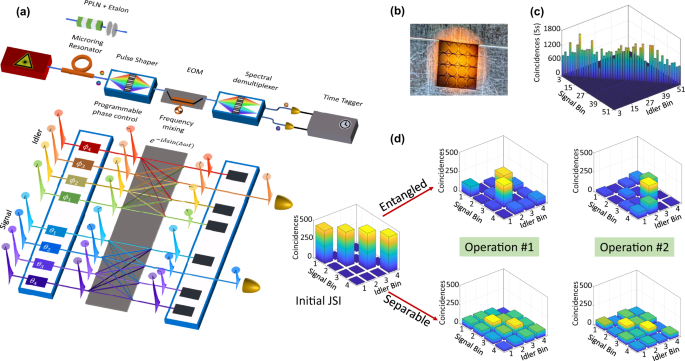科学者たちは、量子ビットが情報を保持できる時間を延ばすための新しい方法を実証しました。 Scientists demonstrate a new method for stretching the length of time qubits can maintain information — by disrupting the symmetry of their environment.
2022-10-13 アルゴンヌ国立研究所(ANL)
この非対称性により、量子ビットはノイズから保護され、対称的な構造に格納された場合に比べて5倍の時間、情報を維持することが可能になった。研究チームは、量子ビットが情報を保持する時間であるコヒーレンス時間を10マイクロ秒(1000万分の1秒)とし、対称的な結晶ホスト中の分子量子ビットのコヒーレンス時間が2マイクロ秒であるのに対し、この値を実現した。
研究チームは、量子ビットの特性を向上させるだけでなく、ホスト結晶の構造に基づいて、あらゆる分子量子ビットのコヒーレンス時間を正確に予測する数学的ツールを開発した。
<関連情報>
- https://www.anl.gov/article/stability-in-asymmetry-scientists-extend-qubit-lifetimes
- https://journals.aps.org/prx/abstract/10.1103/PhysRevX.12.031028
ホストマトリクス制御による光学アドレス指定可能な分子キュービットのスピンコヒーレンス向上 Enhancing Spin Coherence in Optically Addressable Molecular Qubits through Host-Matrix Control
S. L. Bayliss, P. Deb, D. W. Laorenza, M. Onizhuk, G. Galli, D. E. Freedman, and D. D. Awschalom
Physical Review X Published 18 August 2022
DOI:https://doi.org/10.1103/PhysRevX.12.031028
ABSTRACT
Optically addressable spins are a promising platform for quantum information science due to their combination of a long-lived qubit with a spin-optical interface for external qubit control and readout. The ability to chemically synthesize such systems—to generate optically addressable molecular spins—offers a modular qubit architecture which can be transported across different environments and atomistically tailored for targeted applications through bottom-up design and synthesis. Here, we demonstrate how the spin coherence in such optically addressable molecular qubits can be controlled through engineering their host environment. By inserting chromium (IV)-based molecular qubits into a nonisostructural host matrix, we generate noise-insensitive clock transitions, through a transverse zero-field splitting, that are not present when using an isostructural host. This host-matrix engineering leads to spin-coherence times of more than 10 μs for optically addressable molecular spin qubits in a nuclear and electron-spin-rich environment. We model the dependence of spin coherence on transverse zero-field splitting from first principles and experimentally verify the theoretical predictions with four distinct molecular systems. Finally, we explore how to further enhance optical-spin interfaces in molecular qubits by investigating the key parameters of optical linewidth and spin-lattice relaxation time. Our results demonstrate the ability to test qubit structure-function relationships through a tunable molecular platform and highlight opportunities for using molecular qubits for nanoscale quantum sensing in noisy environments.



